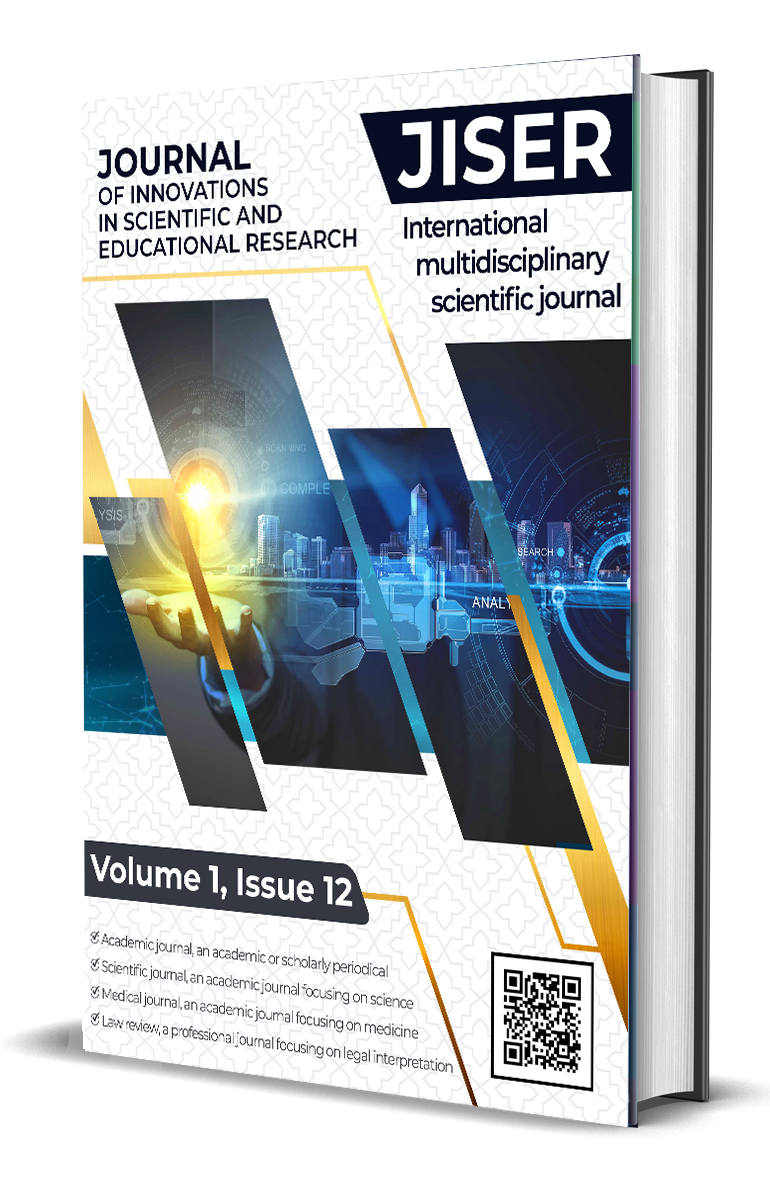UNLOCKING THE PATTERNS OF ENGLISH: A DEEP DIVE INTO COLLOCATIONS AND PHRASEOLOGY
Keywords:
collocations, phraseology, English language, linguistic phenomena, language proficiency, communication, language acquisition, teaching methodologies, computational linguistics, idiomatic language, language structure, language usage.Abstract
This article provides a comprehensive examination of collocations and phraseology within the English language, elucidating their significance, structures, and applications. Collocations, the natural co-occurrences of words, and phraseology, encompassing fixed expressions and idiomatic language, serve as foundational elements in linguistic proficiency and effective communication. Through a detailed analysis of collocational patterns and phraseological units, this study delves into their role in language acquisition, teaching methodologies, and computational linguistics. By addressing challenges in mastering collocational knowledge and outlining future research directions, this article contributes to a deeper understanding of English language usage and pedagogy. Collocations and phraseology play a fundamental role in the structure and usage of the English language. This article provides an in-depth exploration of these linguistic phenomena, delving into their definition, significance, and applications in various contexts. By examining the intricate patterns and relationships between words, we uncover the mechanisms behind effective communication in English and highlight their importance for language learners and educators alike.
References
Benson, M., Benson, E., & Ilson, R. (1997). The BBI Combinatory Dictionary of English: A Guide to Word Combinations. John Benjamins Publishing.
Cowie, A. P. (1998). Phraseology: Theory, Analysis, and Applications. Oxford University Press.
Farghal, M., & Obiedat, H. (1995). Collocations in applied linguistics: A case study of collocations in teaching the Palestinian Arab students of English. International Journal of Applied Linguistics, 5(2), 209-237.
Gries, S. T. (2006). Exploring variability within repeated language use: Methodological and theoretical aspects, Corpus Linguistics and Linguistic Theory, 2(2), 243-274.
Halliday, M. A. K., & Hasan, R. (1976). Cohesion in English. Longman.
Hoey, M. (2005). Lexical Priming: A New Theory of Words and Language. Routledge.
Hunston, S., & Francis, G. (2000). Pattern grammar: A corpus-driven approach to the lexical grammar of English. John Benjamins Publishing.
Kjellmer, G. (1991). Lexical collocations and their relation to spoken language. Gunilla Kjellmer.
Mel'čuk, I. A. (1995). Phrasemes in language and phraseology in linguistics. In Fase, W., Wintgens, A., & Pauwels, P. (Eds.). (1995). Proceedings of the International Symposium on Lexicography and Lexicology at Exeter (pp. 71-87). Leuven: Leuven University Press.
Nattinger, J. R., & DeCarrico, J. S. (1992). Lexical phrases and language teaching. Oxford University Press.
Sinclair, J. (1991). Corpus, Concordance, Collocation. Oxford University Press.
Stubbs, M. (2001). Words and phrases: Corpus studies of lexical semantics. Blackwell Publishers.
Wray, A. (2002). Formulaic Language and the Lexicon. Cambridge University Press.











